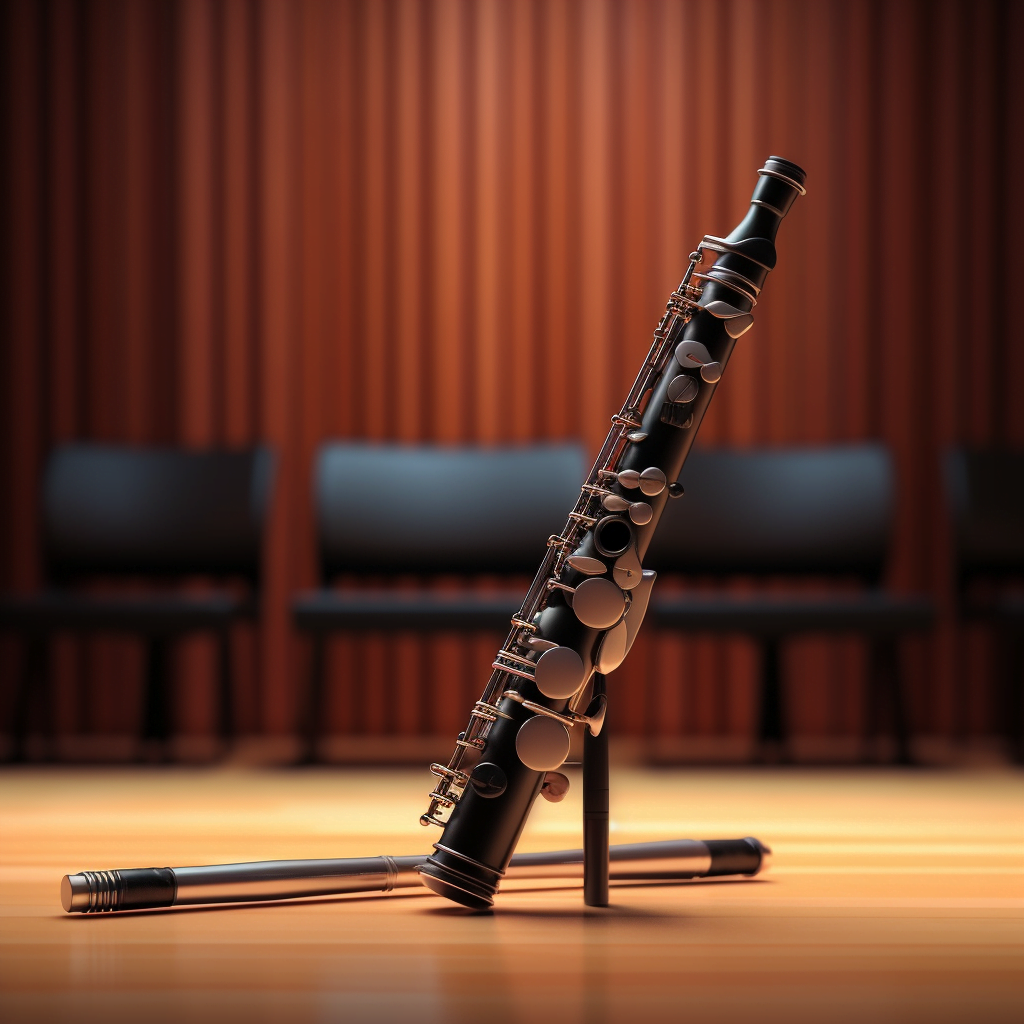History of Oboe
The oboe is a woodwind instrument that has been around for centuries, with its origins dating back to ancient civilizations such as Egypt and Greece. It was originally known as the “hautbois” or “high wood,” and was primarily used for outdoor military ceremonies and religious rituals.
During the Renaissance and Baroque periods, the oboe became a popular instrument in orchestras and ensembles, and its design evolved to include keys and a more sophisticated system of fingerings. The Baroque oboe was the primary form of the instrument until the late 17th century, when the Classical era brought new innovations to the instrument’s design.
In the 19th century, the Romantic era saw the oboe take on a more prominent role in orchestral music, with composers such as Mozart, Beethoven, and Brahms featuring the instrument in their works. The oboe also became a popular solo instrument, with virtuosos such as Johann Nepomuk Hummel and Heinrich Wilhelm Ferling composing works specifically for the instrument.
Today, the oboe continues to be an important member of the orchestra and chamber ensembles, and its distinctive sound is used in a wide range of musical genres from classical to jazz and beyond.
Construction of the Oboe
The oboe is a woodwind instrument that is known for its distinct timbre and piercing sound. It is made of wood, typically grenadilla or rosewood, and consists of several parts that are carefully crafted and assembled to produce a functioning instrument.
The main body of the oboe is a long, narrow tube that is conically shaped. It has a series of tone holes, each of which is covered by a key mechanism that the player operates with their fingers. At the top of the instrument is a double reed, which consists of two thin pieces of cane that vibrate against each other when air is blown through them. The player produces sound by blowing air into the instrument and controlling the pressure and speed of the air with their lips and breath.
The oboe also has a variety of other parts, including a metal bell, a tenon joint that connects the main body to the bell, and a corked tenon that fits into the player’s mouth. The instrument must be carefully maintained to keep it in good playing condition, as changes in temperature and humidity can affect the wood and the sound quality. Oboes are often played professionally in orchestras, wind ensembles, and chamber music groups, and are also used in many genres of popular music.
Popular Oboists
There have been many famous oboists throughout history, who have not only helped shape the sound of the instrument, but also pushed its technical limits. Some of the most notable oboists include:
- Marcel Tabuteau: A French-born oboist who spent most of his career in the United States, Tabuteau was known for his beautiful sound and expressive playing. He is considered one of the most influential oboists of the 20th century, and was a prominent teacher at the Curtis Institute of Music.
- Heinz Holliger: A Swiss oboist and composer, Holliger is known for his virtuosic playing and innovative approach to the instrument. He has premiered many works by contemporary composers, and has recorded a vast repertoire of oboe music.
- Nancy Ambrose King: An American oboist who has won numerous awards and performed with many orchestras, King is known for her expressive playing and technical mastery of the instrument. She is also a prominent teacher, having taught at the University of Michigan for many years.
- John de Lancie: An American oboist who served as principal oboist of the Philadelphia Orchestra for many years, de Lancie was known for his beautiful sound and impeccable technique. He was also a teacher at the Curtis Institute of Music.
- François Leleux: A French oboist and conductor, Leleux is known for his virtuosic playing and innovative programming. He has recorded a wide range of repertoire, from baroque music to contemporary works, and has collaborated with many leading orchestras and conductors.
The Oboe in Contemporary Orchestra and Wind Ensemble
The oboe is a staple instrument in contemporary orchestras and wind ensembles. It is often featured prominently in these groups and serves a critical role in creating the unique sound and texture of the ensemble. In modern orchestration, the oboe is often used as the lead voice in the woodwind section, and it is responsible for providing the foundation for many important melodies and harmonies.
In a contemporary orchestra, the oboe is often used in combination with other instruments to create complex harmonies and counterpoint. The instrument is capable of producing a wide range of dynamic and expressive sounds, from soft and mellow to powerful and forceful. The oboe’s unique timbre and tonality make it well-suited for solo performances and are often featured in classical and contemporary music compositions.
In wind ensembles, the oboe serves as the foundation for the entire woodwind section. It often acts as the lead instrument in the section and provides a solid foundation for the other instruments to build on. The oboe is also used to provide a counterpoint to the other instruments in the section, creating a rich and complex texture that is essential to the overall sound of the ensemble.
Overall, the oboe plays a critical role in contemporary orchestras and wind ensembles, providing a unique sound and texture that is essential to creating the rich, complex sound that these groups are known for. Whether used as a solo instrument or as part of a larger ensemble, the oboe continues to be a versatile and essential instrument in the world of contemporary music.
Oboe repertoire
Here are three of the most popular pieces of oboe repertoire:
- Concerto in D minor for Oboe and Strings, Op. 9, No. 2 by Tomaso Albinoni (1671-1751) Composed in the early 18th century, this oboe concerto is a popular and beloved piece in the Baroque repertoire. The piece is comprised of three movements, each with its own distinct mood and character. The first movement is somber and introspective, with a melancholy melody played by the oboe. The second movement is more lively and upbeat, featuring a playful dialogue between the oboe and the string section. The third and final movement is a lively dance, with a catchy melody that showcases the virtuosity of the oboist.
- Sonata for Oboe and Piano by Francis Poulenc (1899-1963) Composed in 1962, this sonata is a modern and expressive piece that is considered one of the most important works in the oboe repertoire. The piece is divided into three movements, each with its own unique character. The first movement is lively and playful, with a jazzy feel and syncopated rhythms. The second movement is more somber and introspective, with a mournful melody that is both haunting and beautiful. The third movement is fast and energetic, with a lively rhythm that showcases the virtuosity of the oboist.
- Concerto for Oboe and Strings by Ralph Vaughan Williams (1872-1958) Composed in 1944, this concerto is a beautiful and contemplative piece that is considered one of the most important works in the oboe repertoire. The piece is comprised of three movements, each with its own distinct mood and character. The first movement is slow and introspective, with a haunting melody played by the oboe. The second movement is more lively and playful, with a catchy melody that is full of energy and spirit. The third and final movement is fast and rhythmic, with a driving pulse that builds to a thrilling conclusion.
These three pieces are just a few examples of the rich and diverse repertoire available to oboists. Each piece offers a unique musical experience, and showcases the expressive and virtuosic capabilities of the oboe.
Additional Reading
Now that you’ve learned about the value of organizing your music metadata, take some time to check out our other articles. Learn how to make money on YouTube as a musician. You can also learn audio engineering 101.
Check out this article comparing compressors and limiters. In this article, you can learn 7 tips for music marketing. Learn the difference between SoundExchange vs SongTrust in this article.
Breve Music Studios publishes music to Spotify, YouTube Music, Amazon Music and more. Follow our pages on Facebook, Instagram, Twitter, TikTok, and YouTube.
Listen to our ensembles: Breve Orchestra, Breve Music Ensemble, Breve Low Brass Ensemble, Breve Woodwind Ensemble, and Jermaine Harris on Spotify.


7 thoughts on “Oboe | What Makes This Instrument So Beautiful 2023”
Comments are closed.